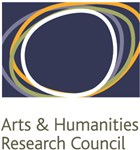Short term morphosyntactic change
Patton (1969) - STMC bibliography
Reference
Patton, Helen 1969. A study of the Agreement of the Predicate with Quantitative Subject in Contemporary Russian. PhD dissertation, University of Pennsylvania. Ann Arbor, Michigan: University Microfilms.
Summary
This dissertation presents a study of variation between the singular and plural form of the predicate where the subject includes various types of quantifiers, as in (1):
| (1a) | Pel-o | neskol´ko | čelovek |
| sang-SG.N | a.few | person[PL.GEN] | |
| ‘A few people sang.’ | |||
| (1a) | Pel-i | neskol´ko | čelovek |
| sang-PL | a.few | person[PL.GEN] | |
| ‘A few people sang.’ | |||
The author analzyes this variation separately in 19th and 20th century Russian literary texts, and in journalistic texts from 1967-1968. She investigates the effect of the following factors:
Properties of the noun in quantified expressions
- noun denotes a person
- noun denotes an animal
- noun denotes an inanimate object
Properties of the quantifier
- cardinal numerals
- collective numerals
- collective nouns
- adverbs of quantity (mnogo ‘many’, neskol´ko ‘a few’ , etc.)
- nouns indicating a specific quantity (e.g., tysjača ‘thousand’)
- nouns indicating non-specific quantities (e.g., massa ‘a wealth of’, tysjači ‘thousands’)
- various constructions denoting approximation (čelovek pjat´ ‘approximately five people’, pjat´ ili šest´ gostej ‘five or six guests’ , okolo sta čelovek ‘roughly a hundred people’)
- oba/obe (masculine and neuter/feminine) ‘both’
- the numerals ‘2’, ‘3’, ‘4’ (cardinal and collectives), compounds in ‘2’, ‘3’, ‘4’ , ‘200’, ‘300’, ‘400’
Structure of the quantified expression
- with plural adjectives (pjat´ novyx domov ‘five new houses’)
- with plural participle (neskol ´ko zabytyx imen ‘ a few forgotten names ’ )
- dependent relative clause (tri partii, kotorye… ‘three parties, which…’)
- with the words vse ‘all’, èti ‘these’
- with limiting words tol´ko, liš´ ‘only’
- with enumeration
Properties of the predicate
- passive
- dynamic/non-dynamic
- enumeration in the predicated
The study reveals significant differences between the three sets of data, namely 19th and 20th century fiction versus journalistic texts from 1967-68. In 19th century prose, quantified expressions with animate nouns show a much stronger preference for plural predicates than those with inanimate nouns. In the 20th century, according to statistics generated by the author, animacy became much less relevant. With both groups of quantified expressions the ratio of singular and plural predicates became very similar: the plural spread, but only with inanimates, while with animates, singular and plural frequencies remained almost as they were in the 19th century. This however does not hold for journalistic texts, in which animacy is decisive: animate nouns take plural predicates much more frequently than inanimates.
Patton’s statistics clearly indicate that the change goes in different directions, subject to various conditioning factors. Along with the spread of plural predicates, under some conditions the plural shows a significant decrease. Thus, the frequency of the plural with the quantifier neskol´ko ‘a few’ diminished by half, approaching that of quantified expressions with animate and inanimate nouns. Patton shows that factors differ in their ability to trigger one of the alternative forms. Neskol´ko ‘a few’ for example, or collective nouns (e.g., bol´šinstvo ‘majority’) favour the singular, overriding factors that typically trigger the plural (such as word order). However, no statistics are provided in support of this argument.
Texts investigated
19th century fiction:
Gogol´, Gončarov, Lermontov, Puškin, Lev Tolstoj
20th century fiction:
Èrenburg, Fadeev, Fedin, Gor´kij, Il´f & Petrov, Kataev, Kaverin , Leonov, Ostrovskij, Paustovskij, Šoloxov
20th century journalistic texts:
Newspaper Pravda 1967 -1968
Statistics
Originally calculations were made for 712 examples extracted from fiction sources and 2,280 examples from the newspaper Pravda (“main corpus”). Results were verified by the test sample (1000 examples in total) from other 19th and 20th century literary texts and from other issues of Pravda (“secondary corpus”). Both in the main and in the secondary corpus, examples are organized into 16 groups corresponding to the 16 “problems” under investigation. The analysis of each problem includes two factors, one of which is always animacy.
For each corpus (main and secondary) calculations are made separately for the 19th century, 20th century and Pravda. Raw figures and percentages are provided.
Which data from the source were used
Statistics are included in the database in full. Data for the main corpus and the secondary corpus are presented separately and then recalculated and treated together under “Total”.
Project members
Prof Greville G. Corbett
Dr Matthew Baerman
Dr Dunstan Brown
Dr Alexander Krasovitsky
Dr Alison Long
Period of award:
September 2004 - May 2008
Funder
Arts and Humanities Research Council (AHRC) - RG/AN4375/APN18306
TOP

